Tesla recorded $344 million in regulatory credits for Q2 2022, down 49% from Q1 which was $679 million.
The credits account for 1.7% of the overall gross margin for the quarter, down from 2.9% last quarter.
The public has been anticipating how much the EV carmaker will earn from its carbon credits this second quarter, and year-over-year it was down 3%.
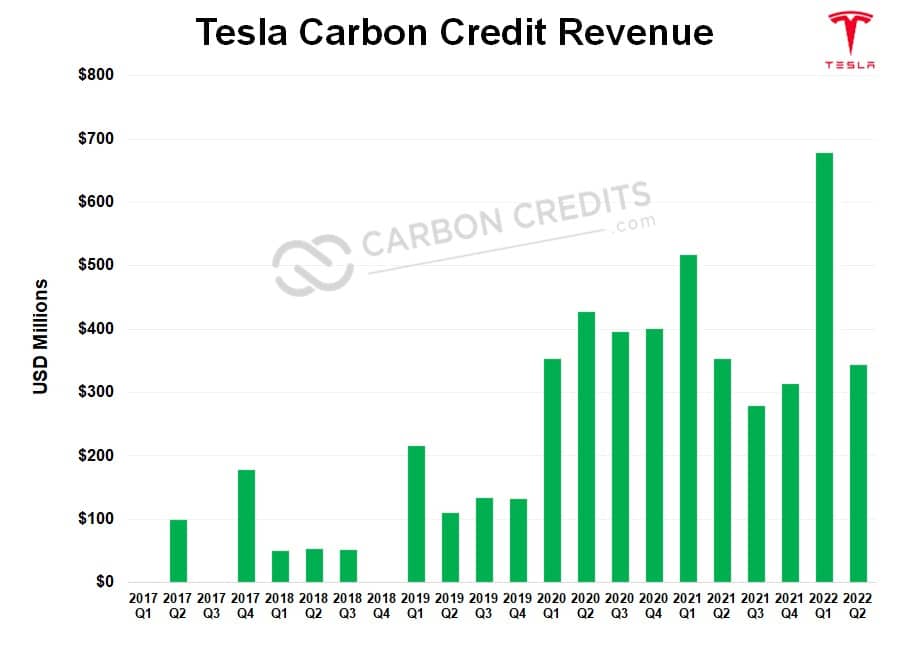
Since 2017, Tesla has made ~$5.1 billion from the sale of regulatory carbon credits as shown above. The credits sold help other automakers meet their emissions regulations and bypass billions in fines.
Alongside the carmaker’s carbon credit sales is the company’s commitment to further reduce its carbon footprint as revealed in its 2021 Impact Report. This report seems to be the answer to the public’s long wait for Tesla’s decarbonization strategies.
Currently, the carmaker is providing energy generation and storage products using its patented solar energy system. They significantly contribute to Tesla’s regulatory carbon credit generation.
Most importantly, they also represent Tesla’s massive efforts in cutting down its carbon footprint.
Tesla’s GHG Emissions
In 2021, Tesla began measuring its Scope 1 and Scope 2 GHG emissions considering the principles and guidance of the GHG Protocol.
The carmaker used the operational control approach method or accounting for GHG emissions from operations under its control. The table below shows Tesla’s emissions for all three scopes.
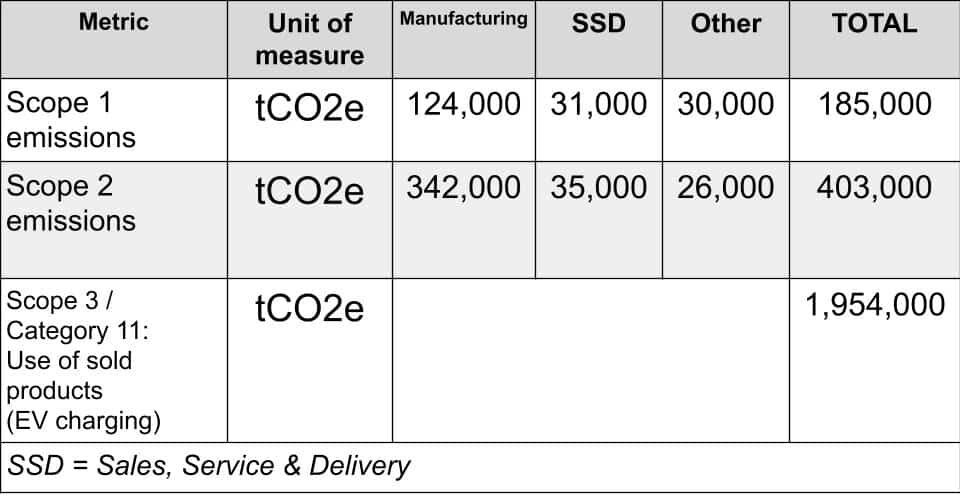
For its Scope 3 emissions, Tesla measures two largest categories: use of product and supply chain.
Use of product emissions:
Tesla has access to primary data from its ~2 million vehicles on the road and fleet of solar and storage products. So it can calculate emissions from use of products each year with accuracy, not just estimates.
Supply chain emissions:
The company had identified which materials and processes in the supply chain are key emitters. It means the firm can prioritize its engagement and projects to tackle those emissions.
100% Renewable Supercharger network
Tesla’s global Supercharger network was 100% renewable in 2021. Thanks to a combination of its onsite resources and annual renewable matching.
Plus, all home charging in California was 100% renewable through annual renewable matching.
As such, the only emissions from the use of Tesla vehicles were from home charging outside of California. It can also be from use of third-party charging networks.
Tesla’s Emissions Reduction Strategies
Decarbonizing the Manufacture and Use of EVs
1. Building new, better designed and more efficient factories. Building components need less movement, use fewer robots, and consume lower energy.
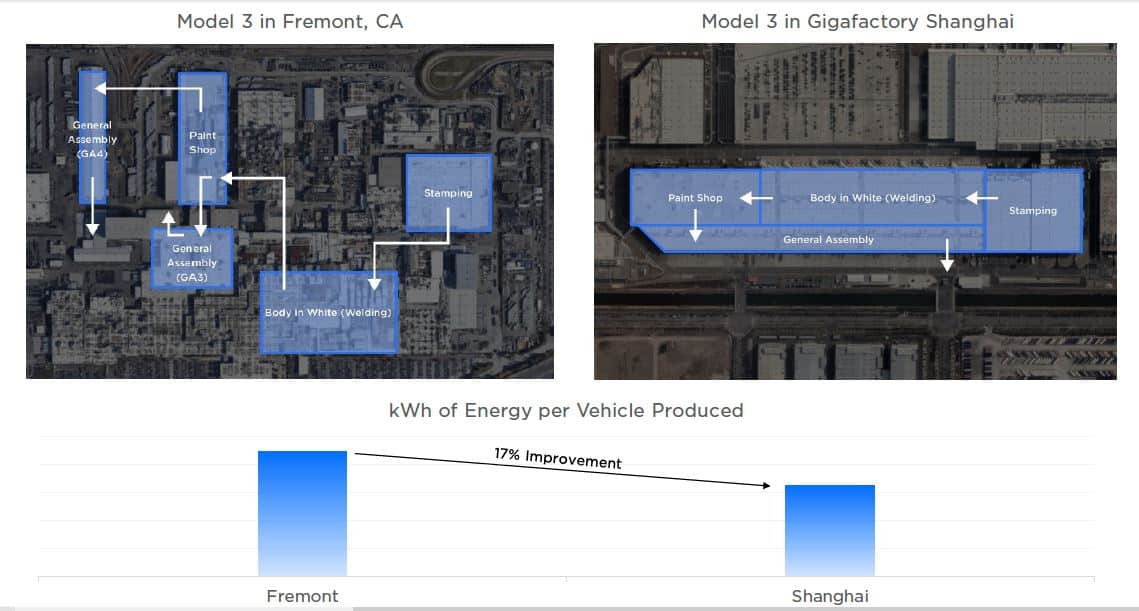
2. Covering roof space with solar panels. All new Tesla factories are designed to be covered with solar panels. As of the end of 2021, the carmaker installed solar panels with a capacity of 21,405 kW on the roofs of Gigafactory Nevada, Gigafactory New York, and manufacturing facilities in California.
3. Leveraging AI to make factories more efficient. Tesla is leveraging 6 years of sensor data to train an AI program to safely control 195 interconnected HVAC units. In its first full year of operation, there’s significant load reductions compared to baseline use.
Increasing Vehicle Utilization
Tesla batteries are designed to outlast the vehicle. A vehicle gets scrapped after about 200,000 miles of use in the U.S. and 150,000 miles in Europe.
By creating a battery that can last for 1,000,000 miles (4,000 charging cycles), Tesla helps reduce emissions per mile driven for high-mileage vehicles like trucks, taxis, or delivery vans.
Reducing Fleetwide Emissions
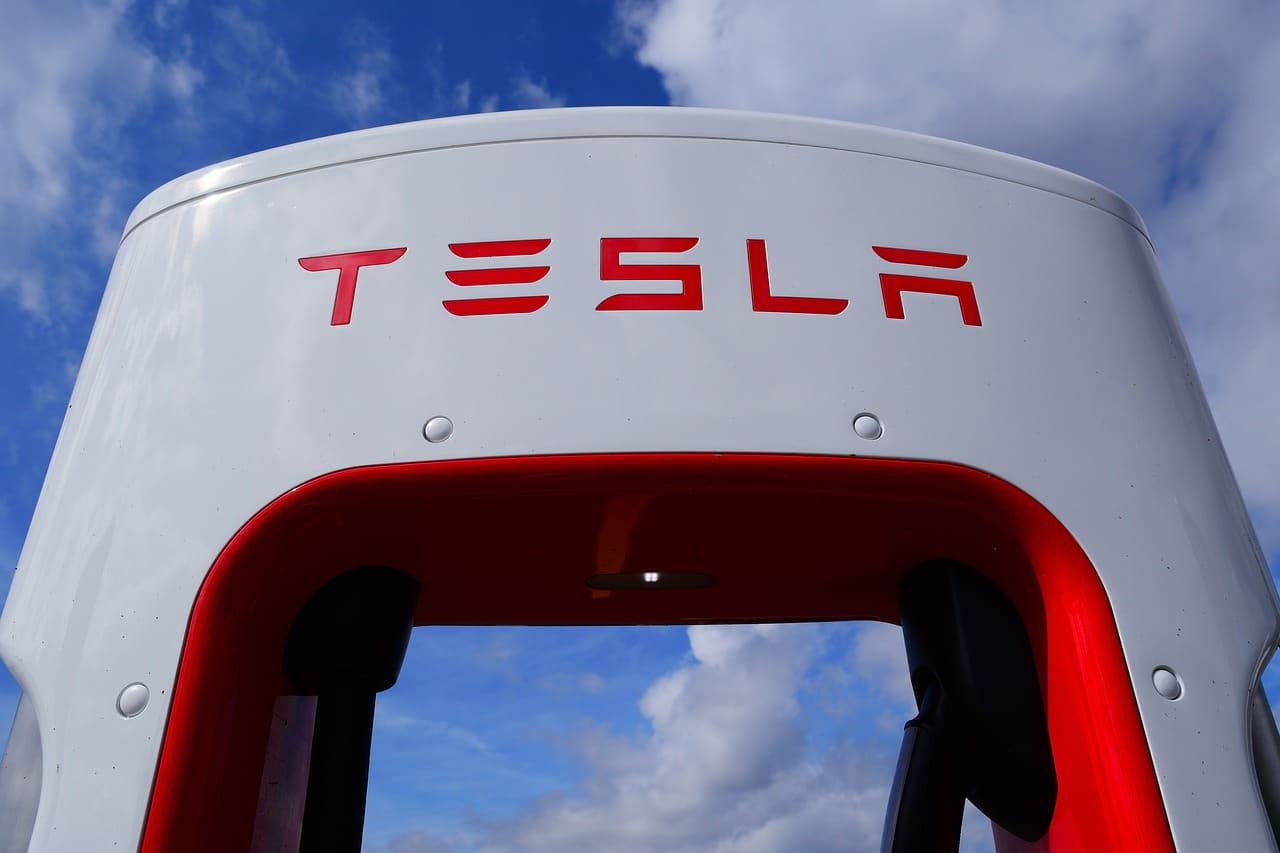
Tesla Semi offers an opportunity to have a great impact on GHG emissions from transport. Combination trucks, which are mostly semi trucks, in the U.S. account for just 1.1% of the total fleet of vehicles on the road.
But they have high fuel consumption because of their weight and heavy use. In fact, they account for about 18% of all U.S. vehicle emissions.
This is why Tesla’s plan to also electrify the heavy-duty truck segment is vital in transitioning the world to sustainable energy.
Right now, cell availability is the limiting factor for full production. A Tesla Semi needs more cells than a passenger vehicle.
Accelerating Deployment of New Factories via Emissions Credits
Emissions credits or carbon credits revenue is used for Tesla’s EV capacity expansion, which in turn displaces ICEs.
In 2021, the EV manufacturer generated almost $1.5 billion in revenue selling emissions credits to other OEMs. The proceeds go to building new factories to make more EVs.
Tesla delivered almost 1 million EVs globally last year. In comparison with other carmakers, Tesla outperformed all others as shown in the chart.
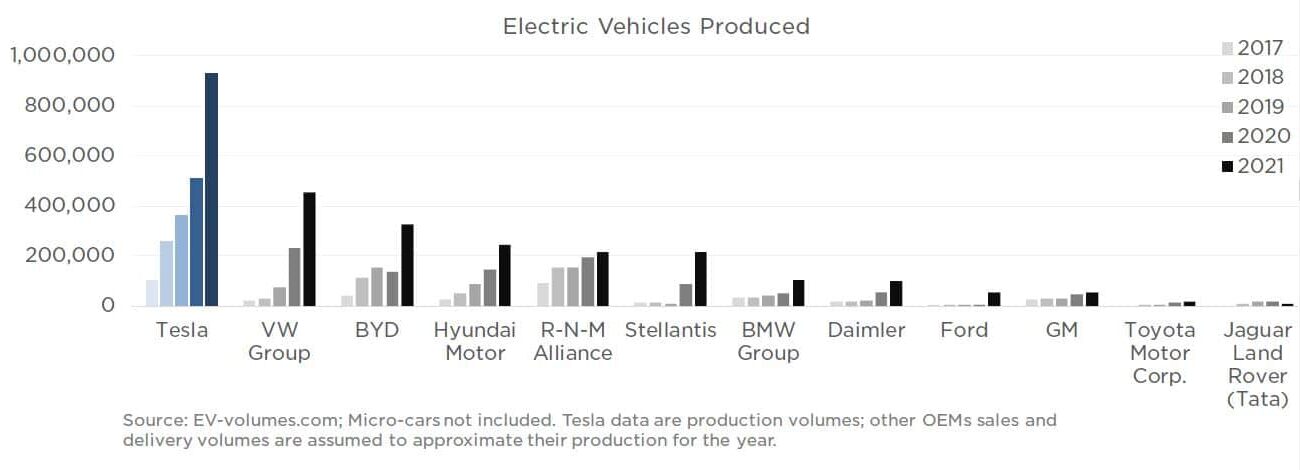
There’s confusion, however, among Tesla’s customers about the company’s claim that its cars produce zero carbon emissions. This led to German Consumer Consumer Association (VZBV) suing Tesla recently.
VZBV claims that consumers were misled into thinking that buying from Tesla will cut the entire emissions from all cars.
The emissions that Telsa reduced by producing EV’s are bundled up and then sold as regulatory credits (carbon credits).
These carbon credits allow other car manufacturers to exceed the emissions limits applicable to their vehicle fleets.
Telsa’s potential consumers are only notified about the emissions rights on page 75 of its Environmental Impact report, which could be downloaded from the website.
Though it’s common practice for other automakers to buy carbon credits from Tesla to offset their emissions, it’s not a sustainable strategy. To meet stricter regulatory mandates worldwide, an industry-wide shift to EVs is crucial.
Tesla’s “Solar + Storage” Products and Supply Chain
Commercial customers: Megapack and renewables (solar)
Pairing energy storage with renewables enables cost-effective decarbonization of the grid. A single Megapack has an average 3,000 kWh worth of battery storage capacity.
In 2021, Tesla started building a new production facility that can produce 40,000,000 kWh of energy storage a year. This helps households rely less on the grid and avoid blackouts.
Tesla sold 4 GWh worth of energy storage products, more than 15% of the 25 GWh global market in 2021. This includes projects in California and Australia.
Add to this Tesla’s Powerwall solar technology for residential customers. Installing solar panels on roofs can help reduce carbon emissions while allowing customers to save on energy costs.
Supply chain: battery recycling
“What happens to Tesla battery packs once they reach the end of their life?”
Before decommissioning and recycling a consumer battery pack, Tesla does everything it can to extend the useful life of each pack. For instance, they send out over-the-air software updates to Tesla vehicles to improve battery efficiency.
Moreover, while Tesla works with third-party recyclers, the firm also recycles in-house. On-site recycling allows for raw material transfer straight to the company’s nickel and cobalt suppliers.
The firm’s cell recycling facility unlocks the cycle of innovation for battery recycling at scale. This enables Tesla to improve current designs via operational learnings and to perform process testing of its products.
By the end of 2021, Tesla’s recycling facility achieved a production rate of over 50 tons of recycled material per week.
Outlook for battery supply chain responsible sourcing:
In 2022, Tesla plans to continue building on its battery responsible sourcing program and improve on the data points. More importantly on the development of supply chain GHG emissions reduction plans and future investments.
All these emissions reductions initiatives allow Tesla to earn massive carbon credits revenue. As the automaker continues to electrify the industry, it can expect more sales from regulatory credits.

